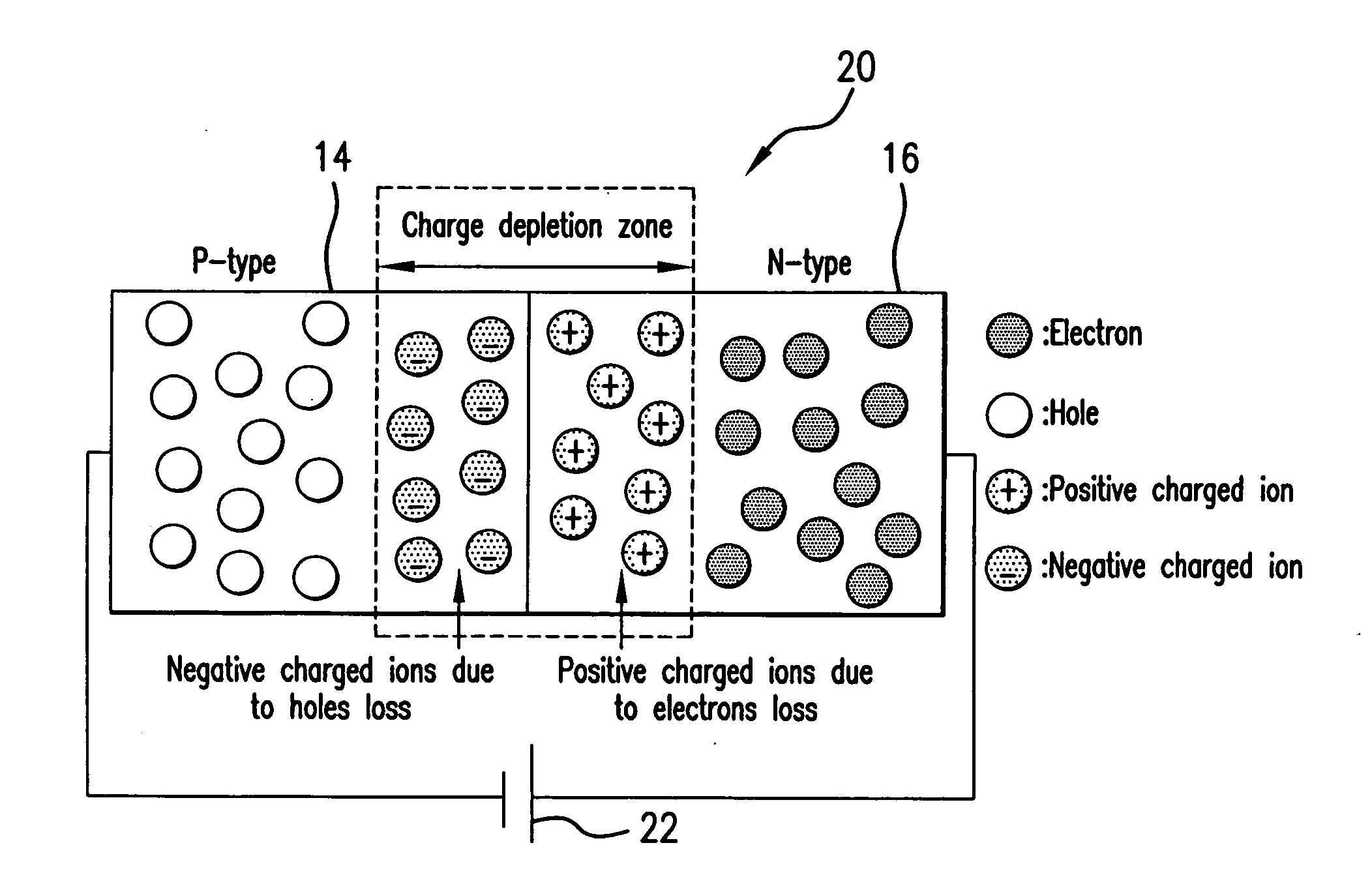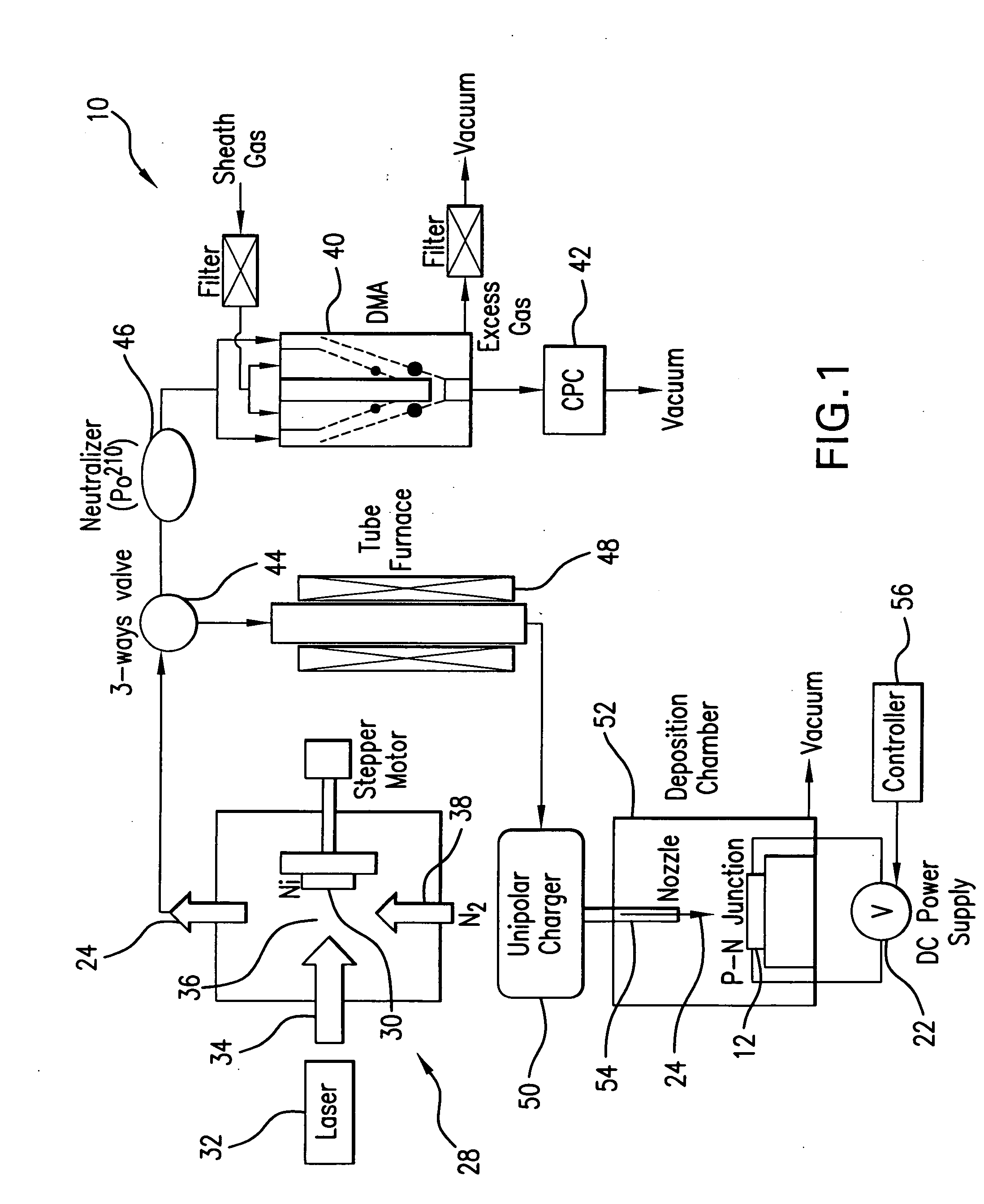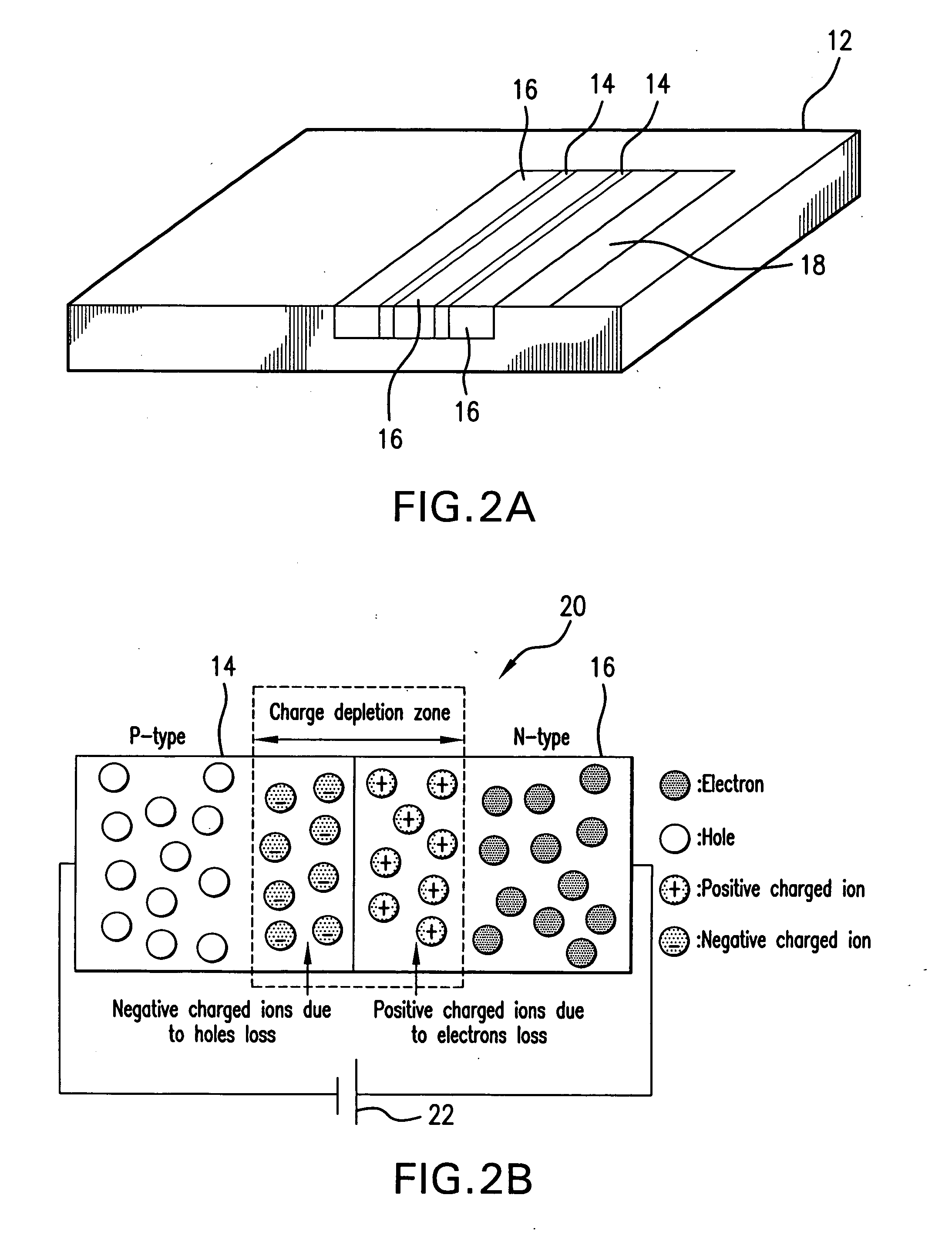Method and system for controllable deposition of nanoparticles on a substrate
a nanoparticle and substrate technology, applied in the field of microelectronic device manufacturing, can solve the problems of limiting the application of metal-semiconductor devices, damaging the metal-coated polymer stamp,
- Summary
- Abstract
- Description
- Claims
- Application Information
AI Technical Summary
Benefits of technology
Problems solved by technology
Method used
Image
Examples
Embodiment Construction
[0056] Referring to FIG. 1, a system 10 is shown for controllable nanoparticle deposition. A patterned substrate 12 shown in FIG. 2A, is patterned with an array of p-doped regions 14 and n-doped regions 16. The stripe-like pattern of p- and n-doped regions shown in FIG. 2A is only presented as an example. The p- and n-doped regions may be arrayed in any fashion to comply with an architecture of a nanoparticle-based device 18 to be fabricated on the substrate 12.
[0057]FIG. 2B illustrates in simplified form a p-n junction 20 formed on the substrate by respective p-doped region 14 and n-doped region 16. In the region where the p- and n-doped regions 14 and 16 are in contact, the electrons from the n-type region 16 diffuse towards the p-type region 14 and combine with the holes to form a charge depletion zone and the build-up of a net charge in each region.
[0058] When a reverse bias is applied to the p-n junction, the width of the charge depletion zone is increased, and an additional ...
PUM
 Login to View More
Login to View More Abstract
Description
Claims
Application Information
 Login to View More
Login to View More - R&D
- Intellectual Property
- Life Sciences
- Materials
- Tech Scout
- Unparalleled Data Quality
- Higher Quality Content
- 60% Fewer Hallucinations
Browse by: Latest US Patents, China's latest patents, Technical Efficacy Thesaurus, Application Domain, Technology Topic, Popular Technical Reports.
© 2025 PatSnap. All rights reserved.Legal|Privacy policy|Modern Slavery Act Transparency Statement|Sitemap|About US| Contact US: help@patsnap.com



